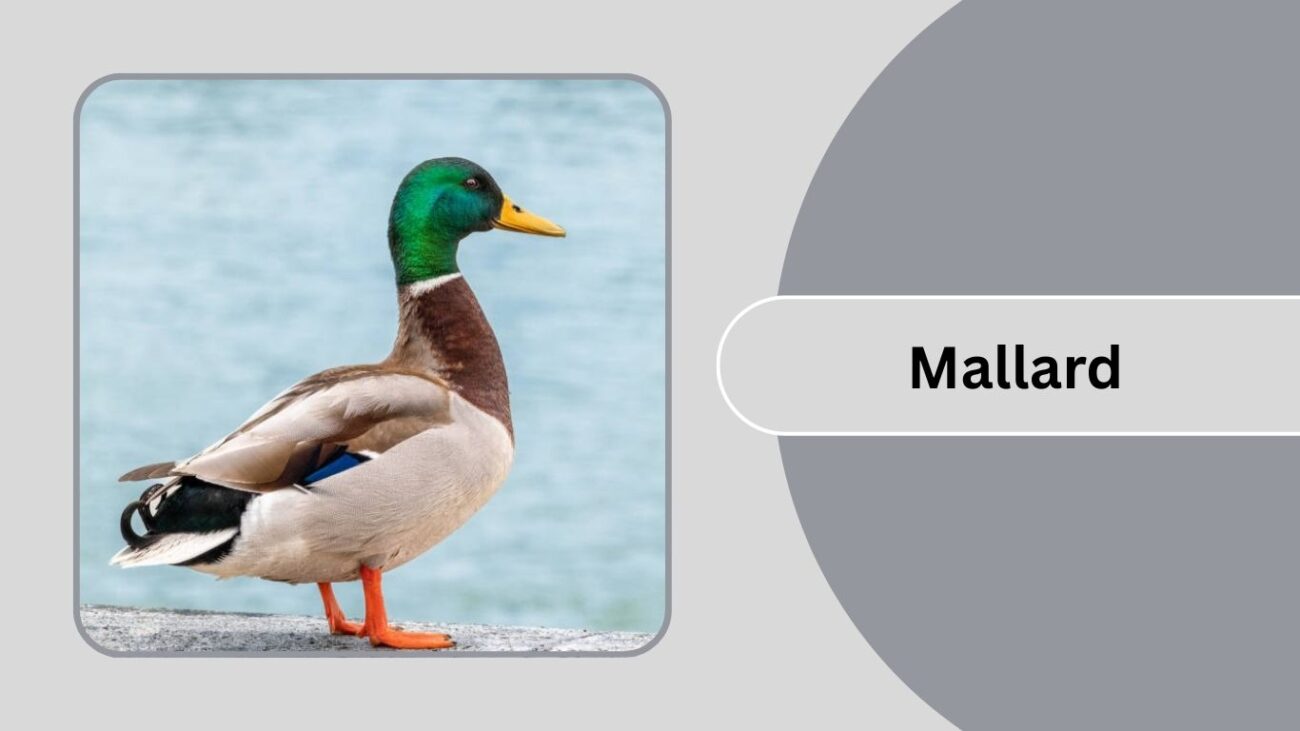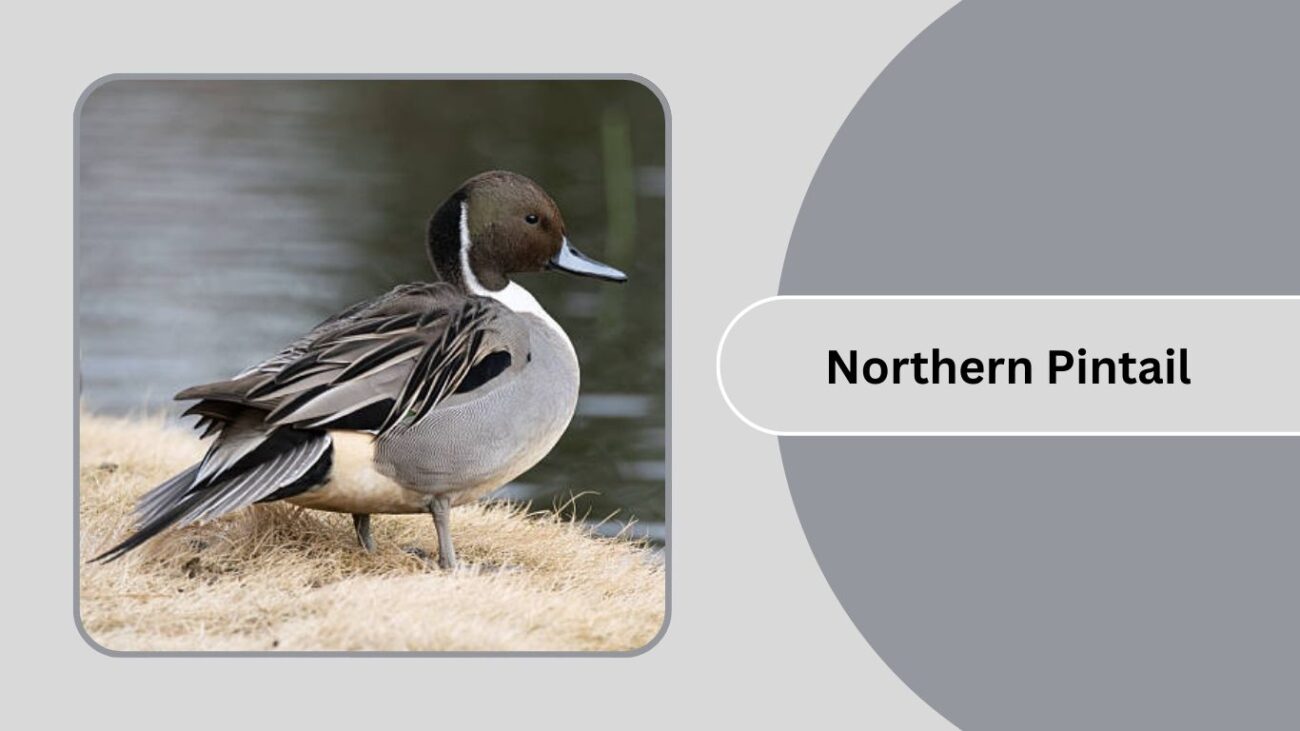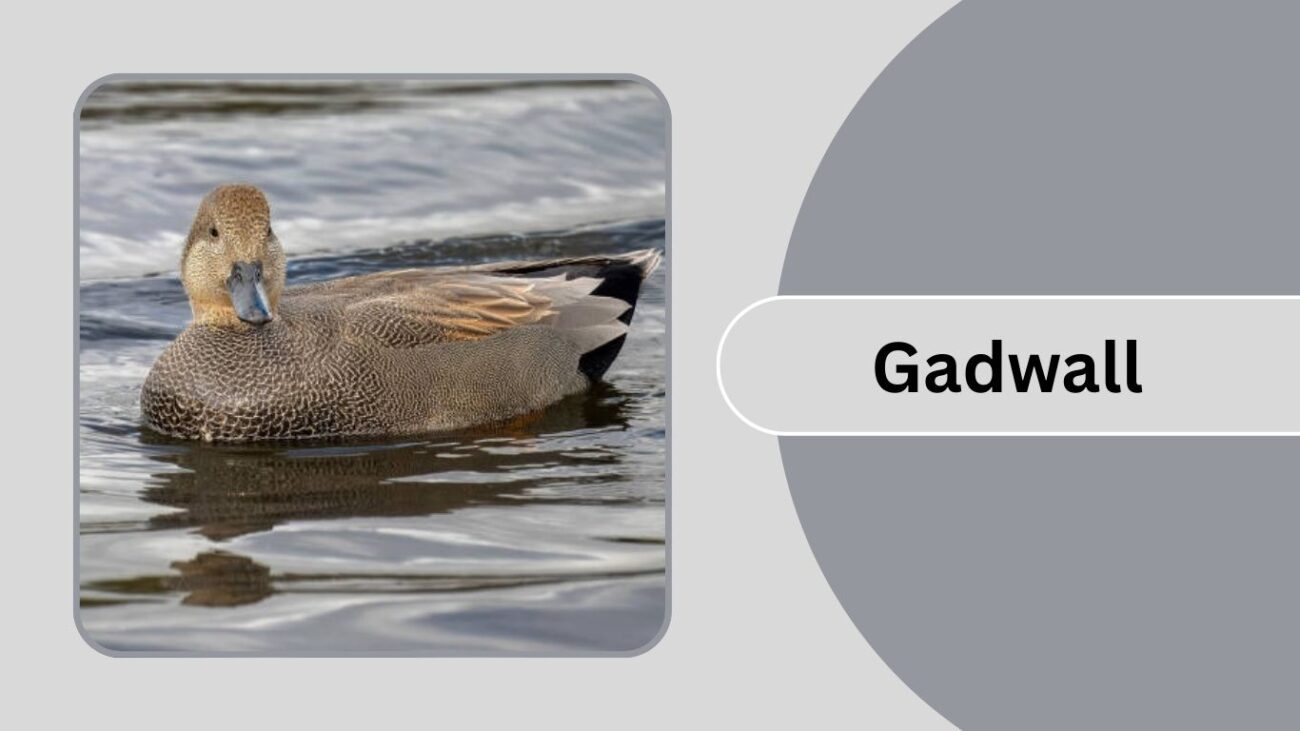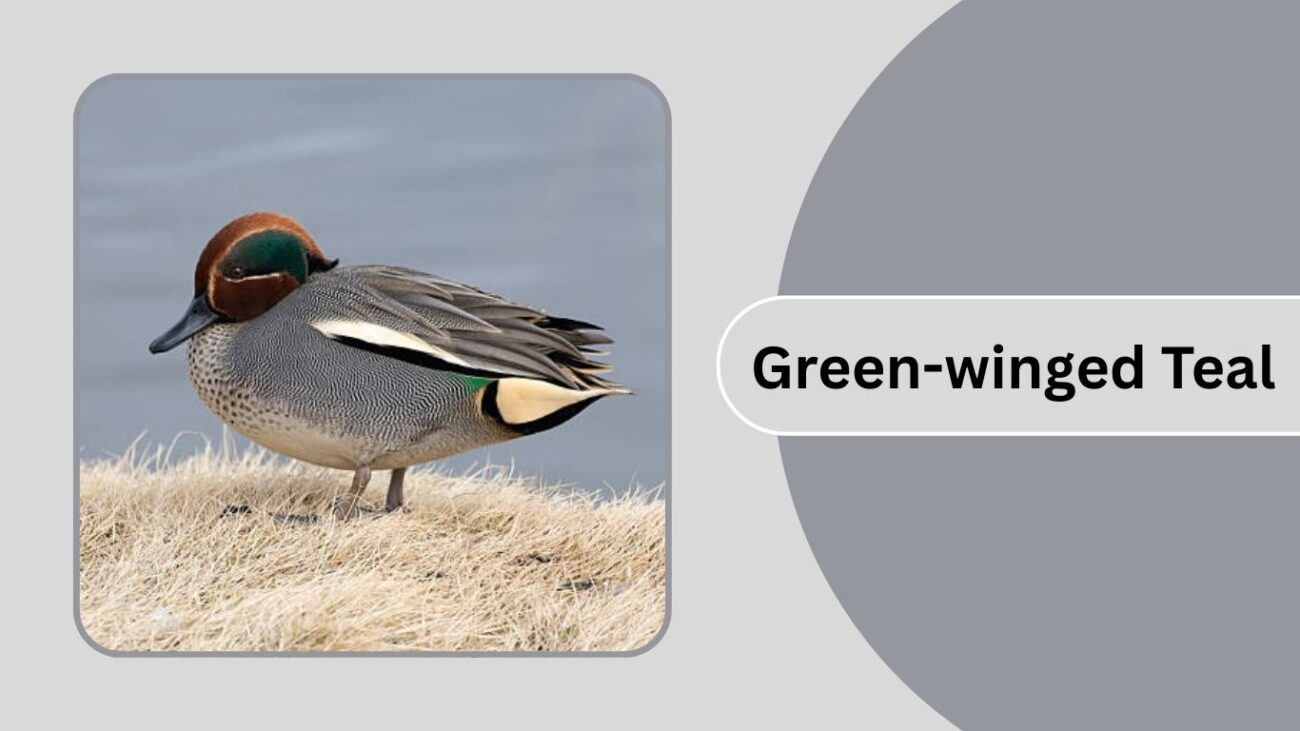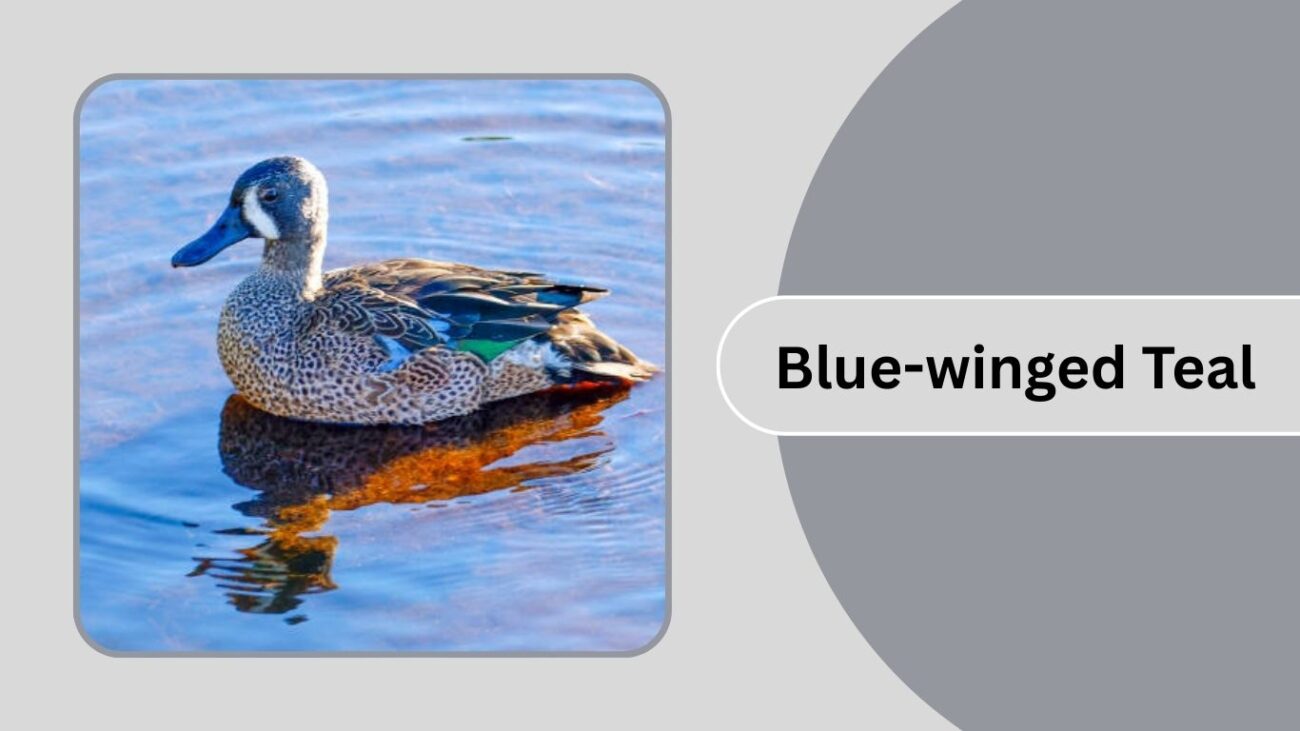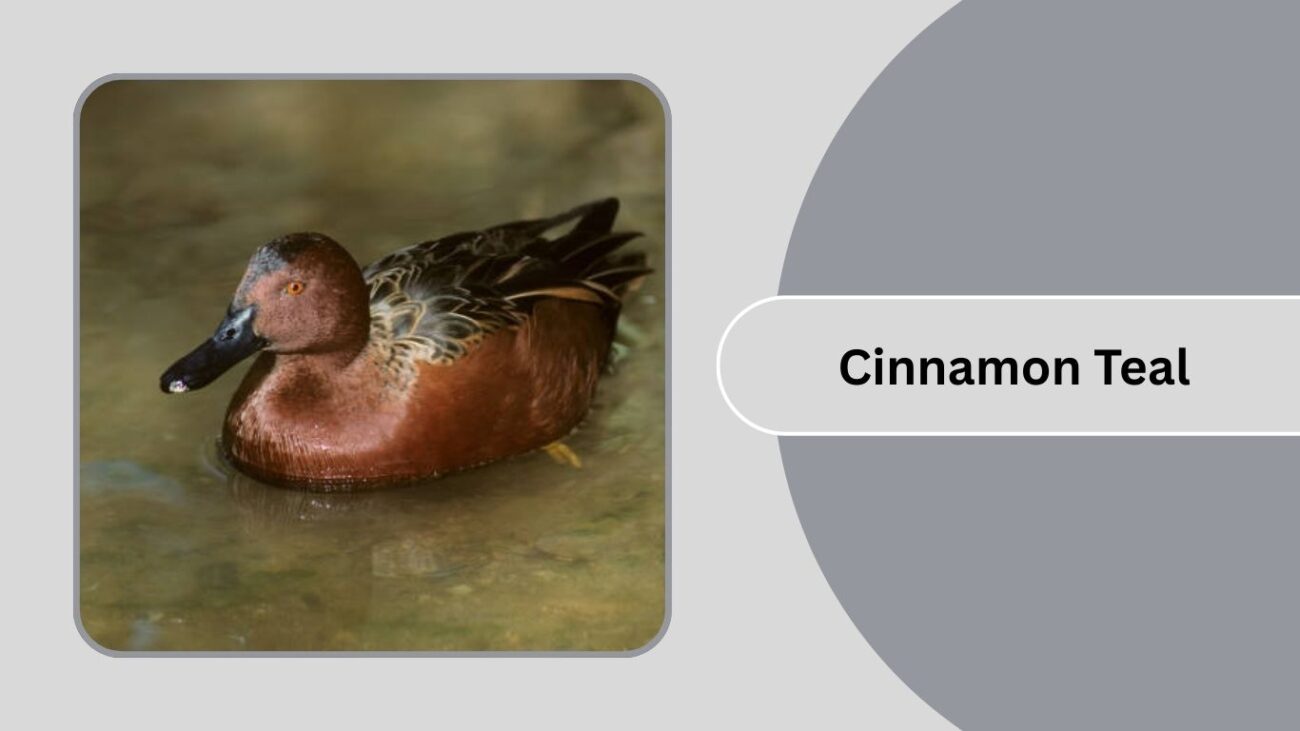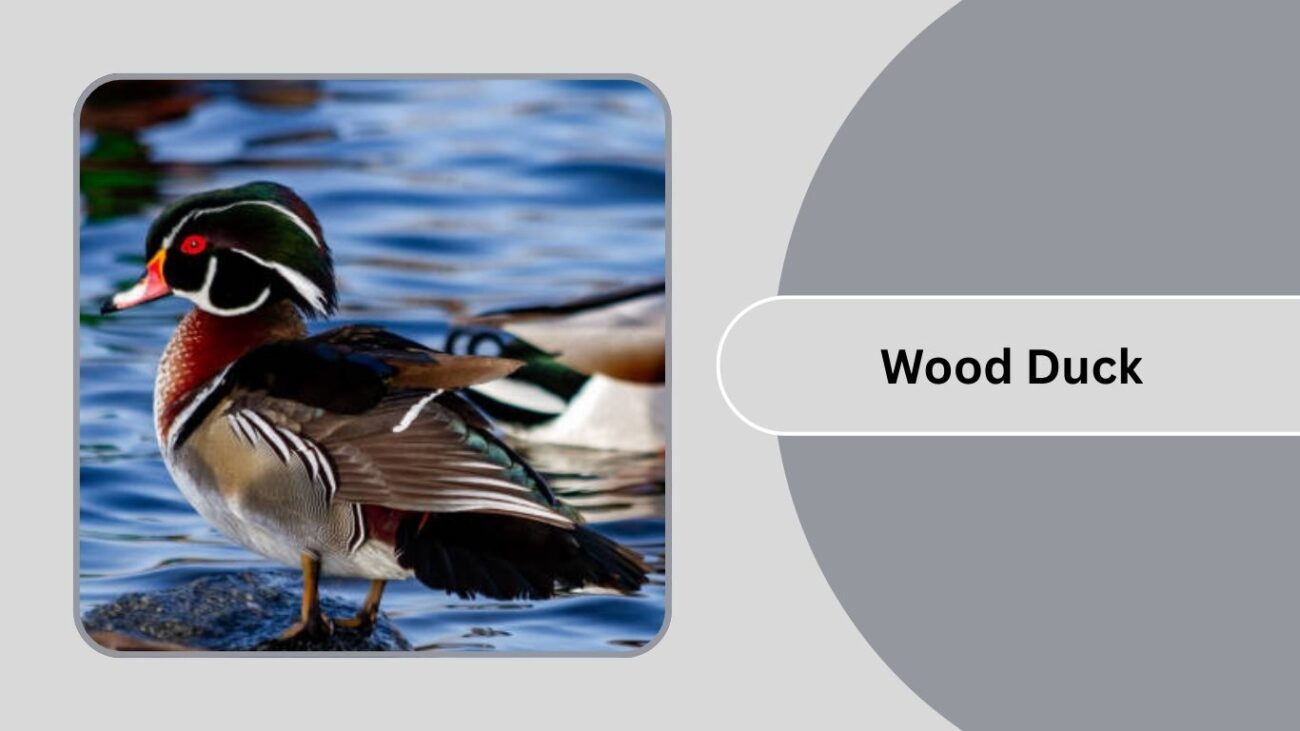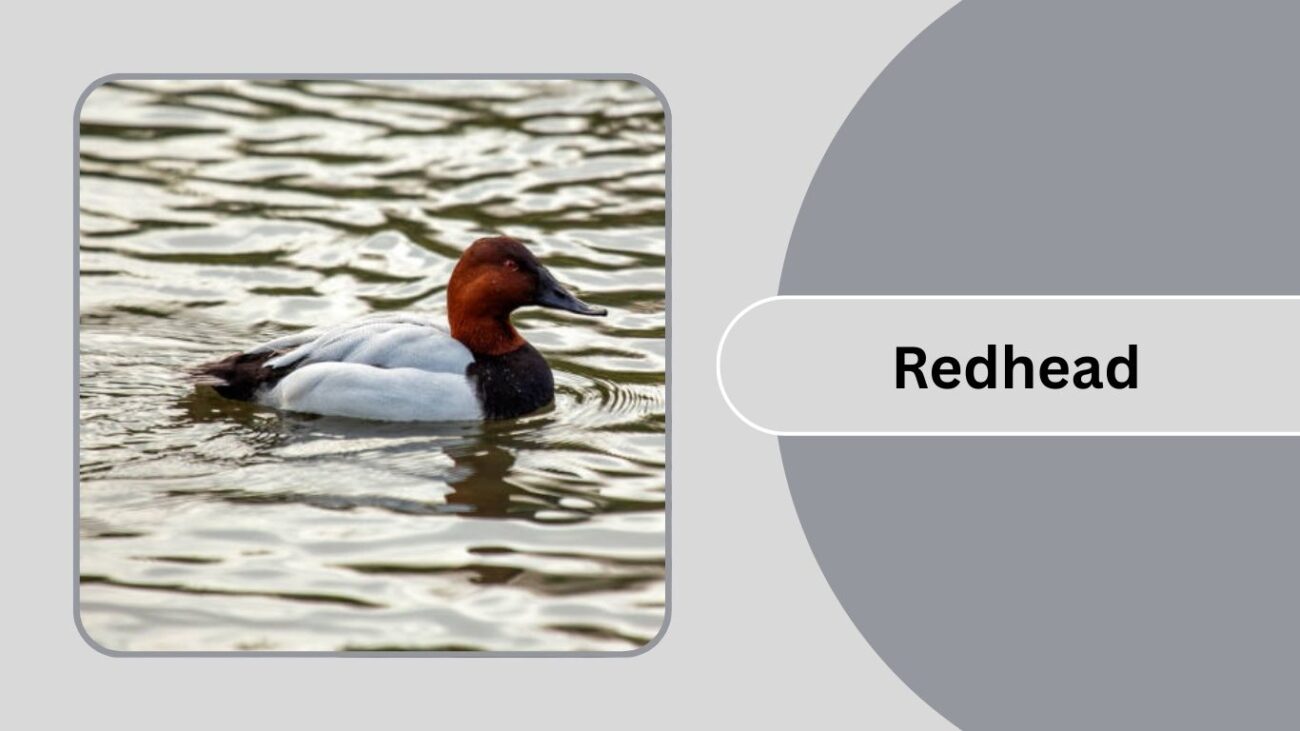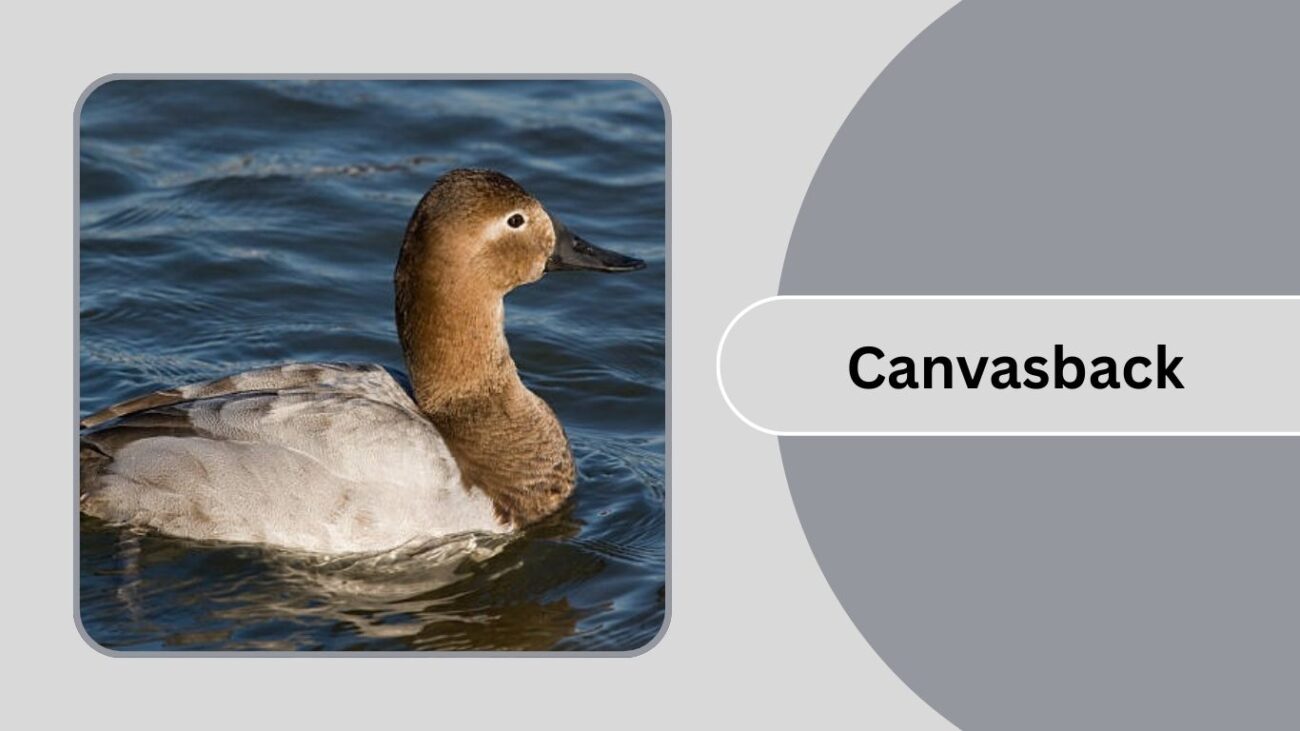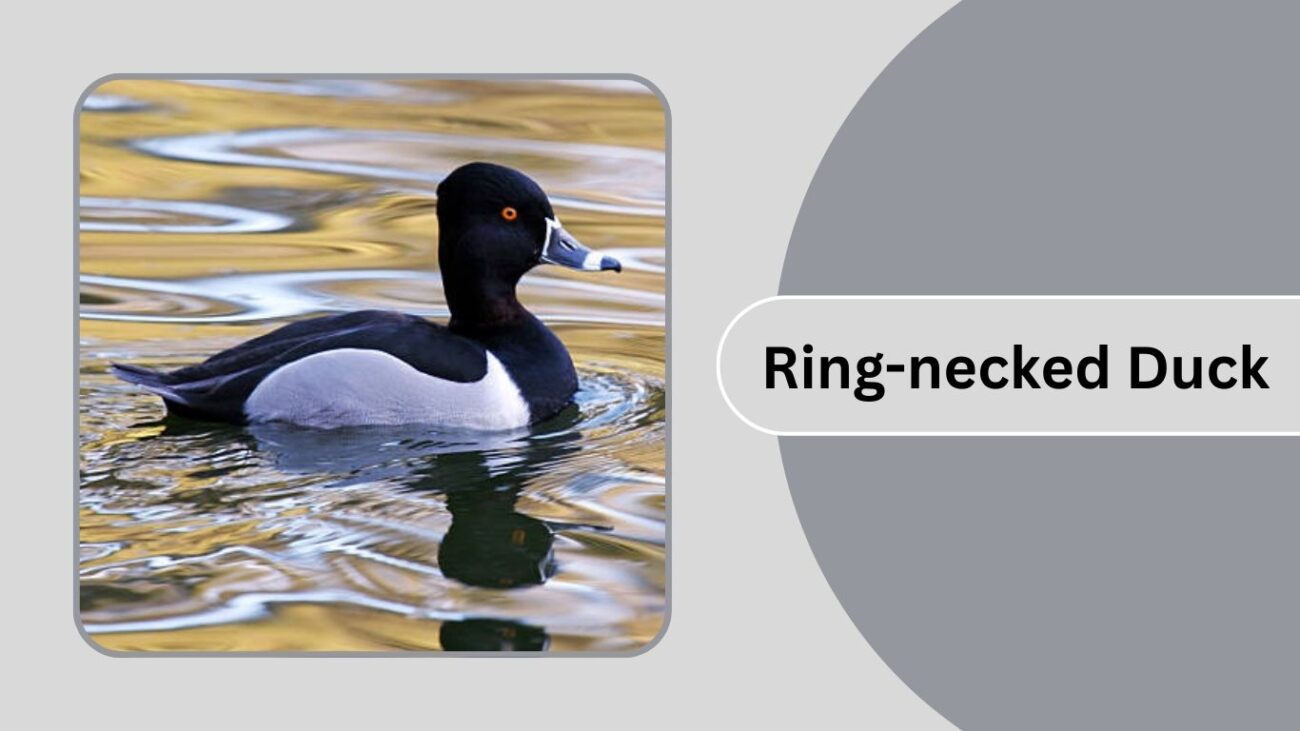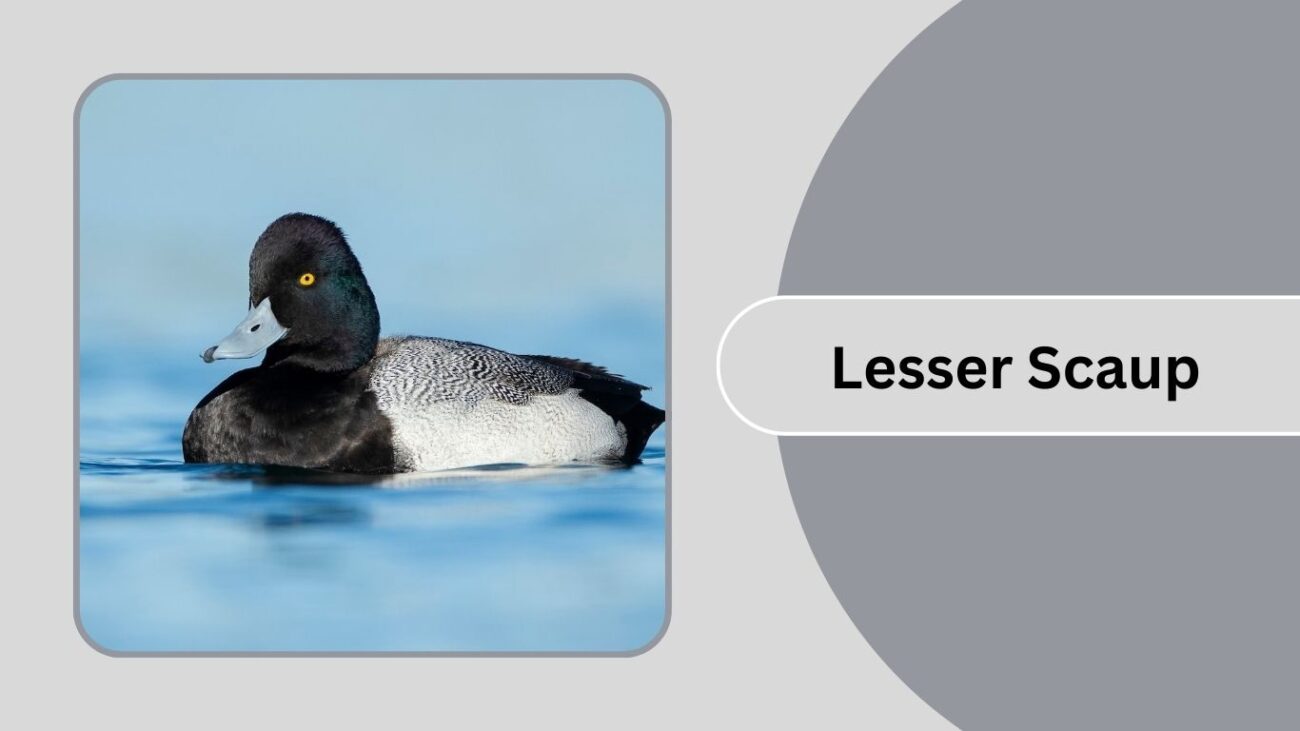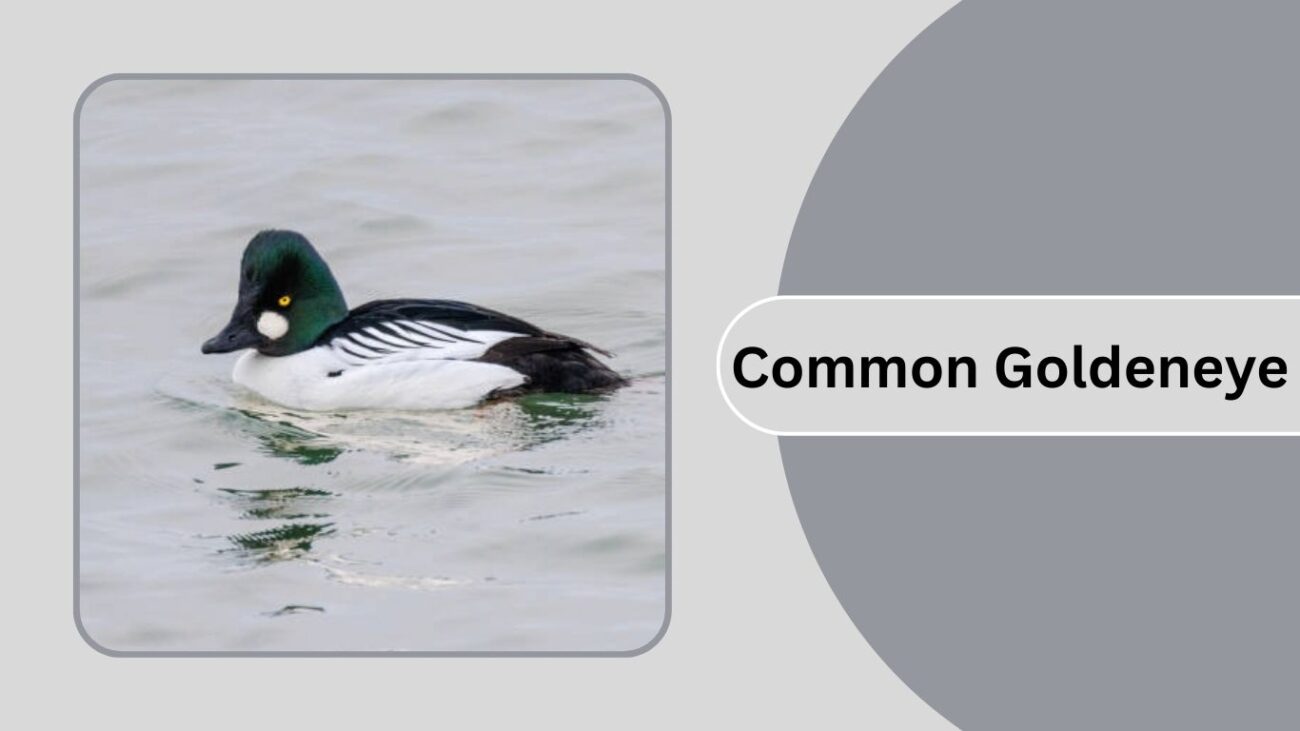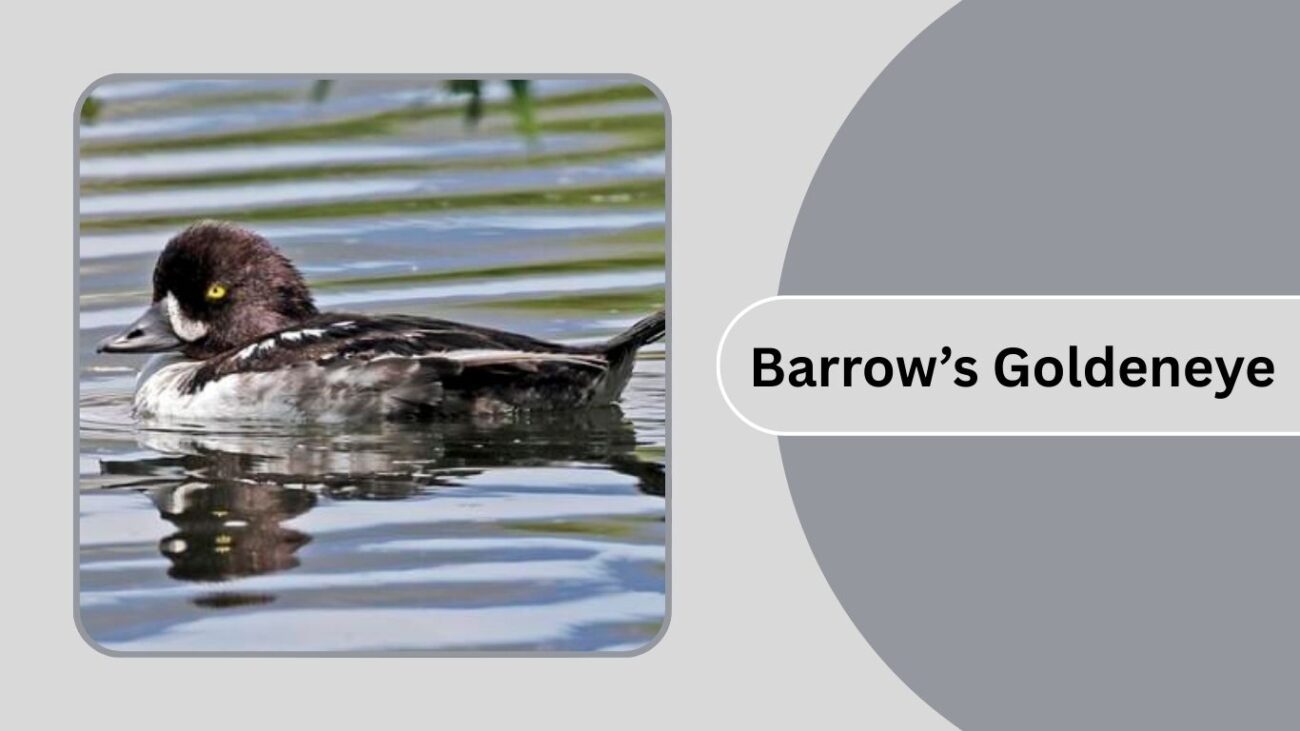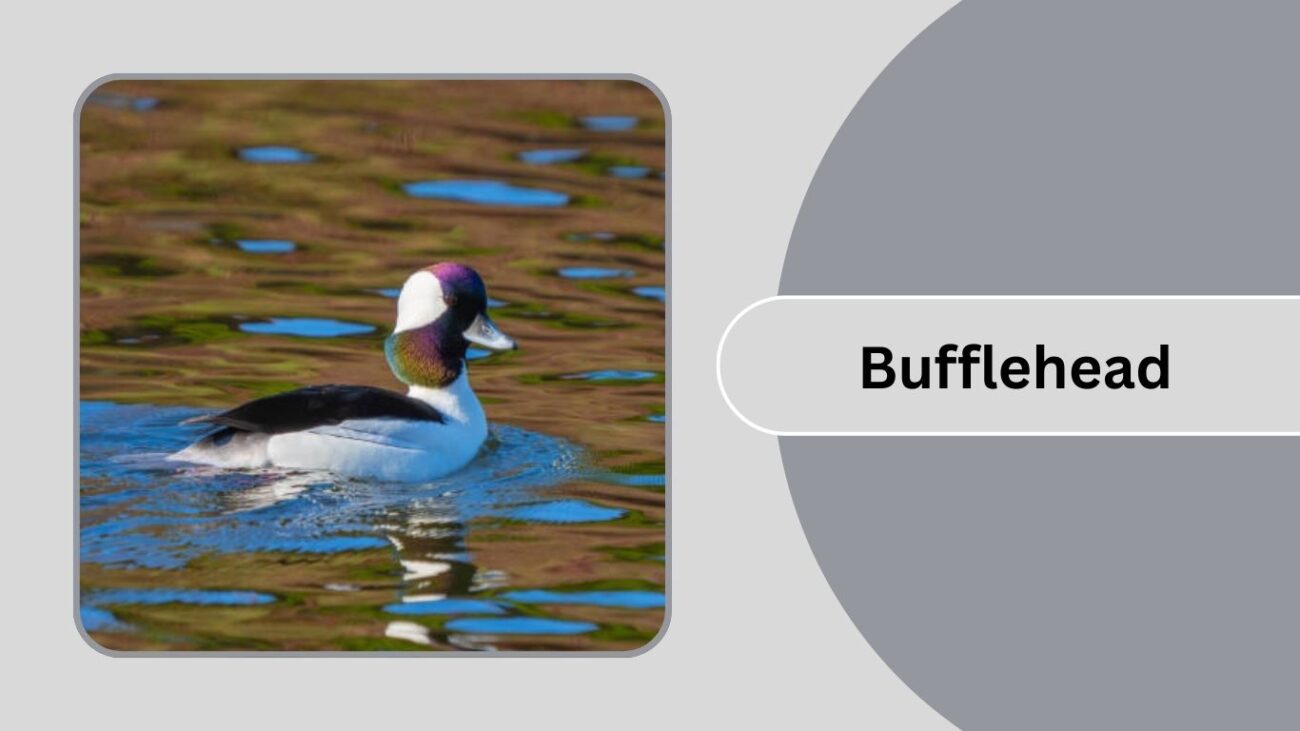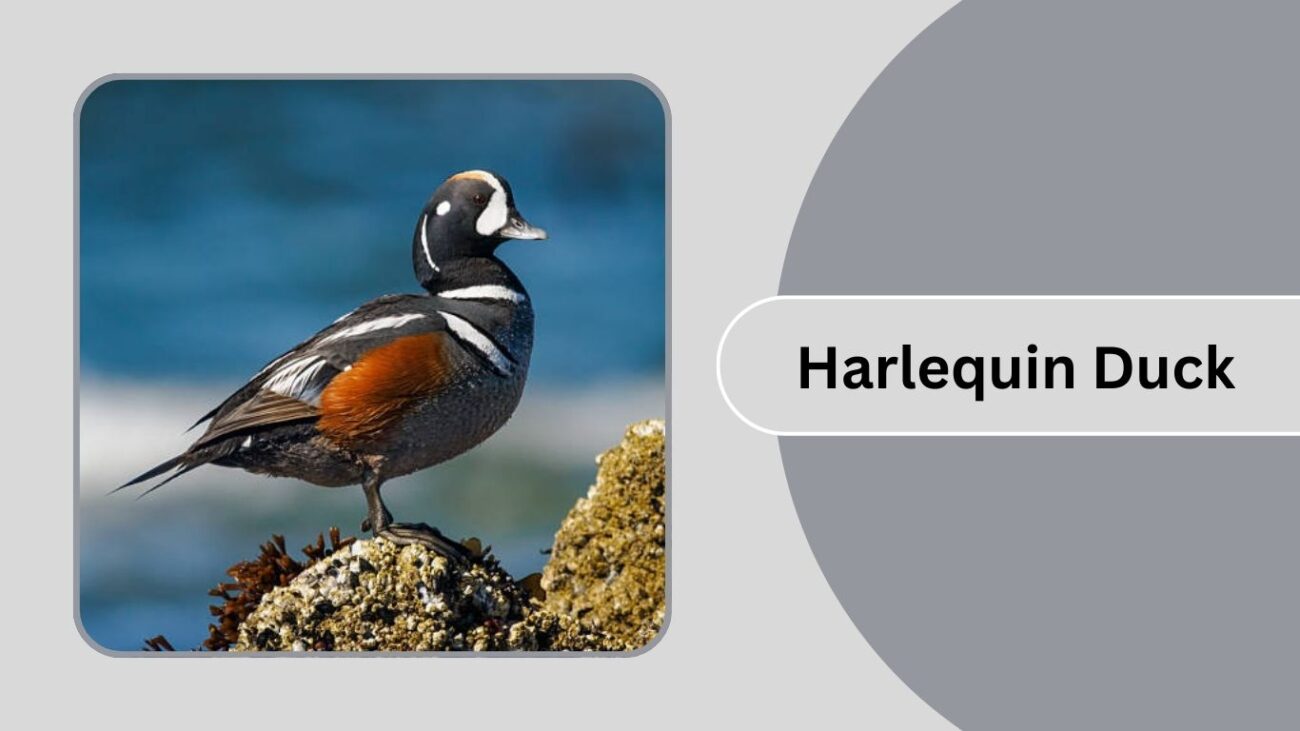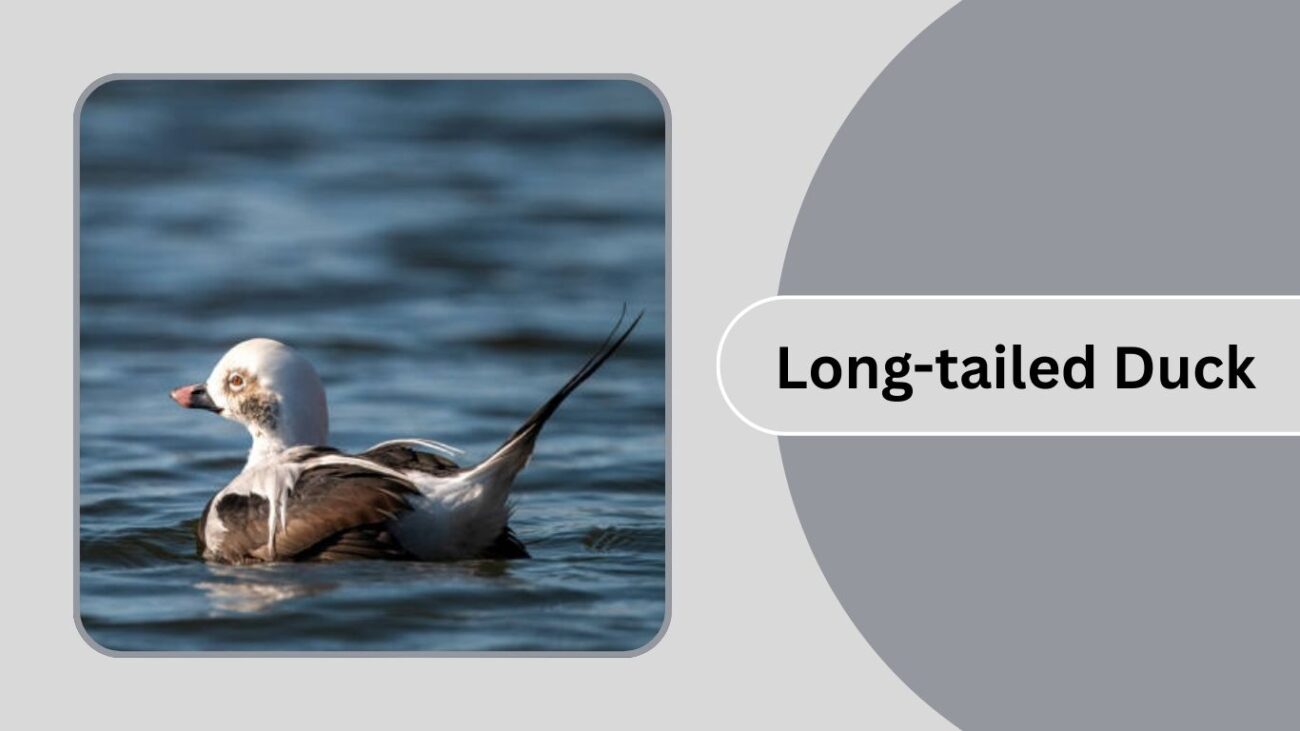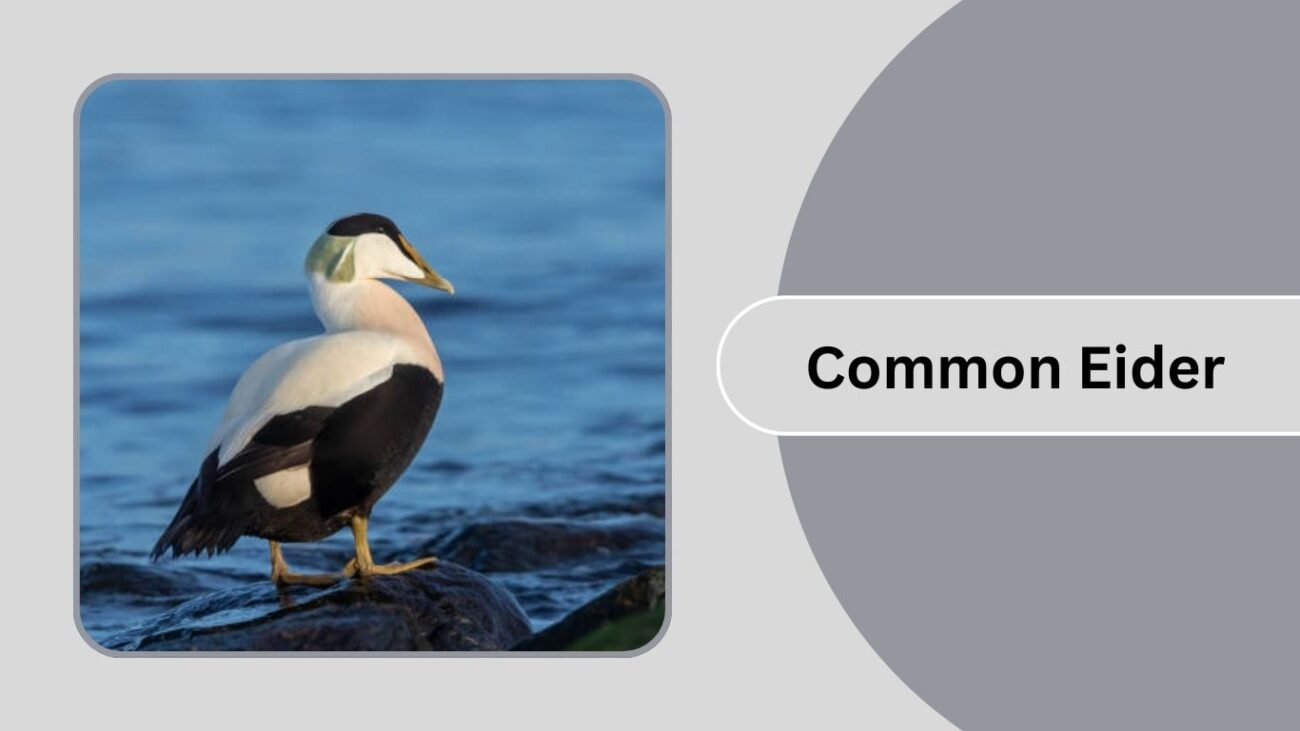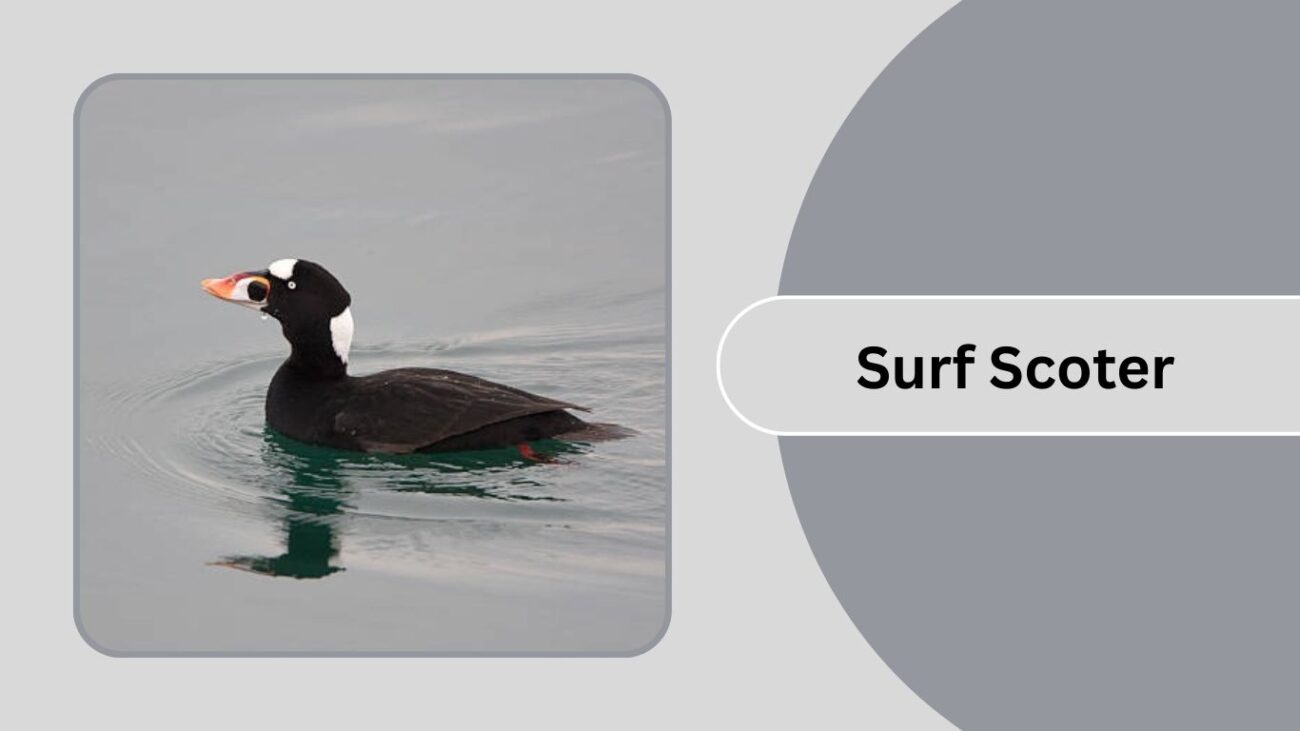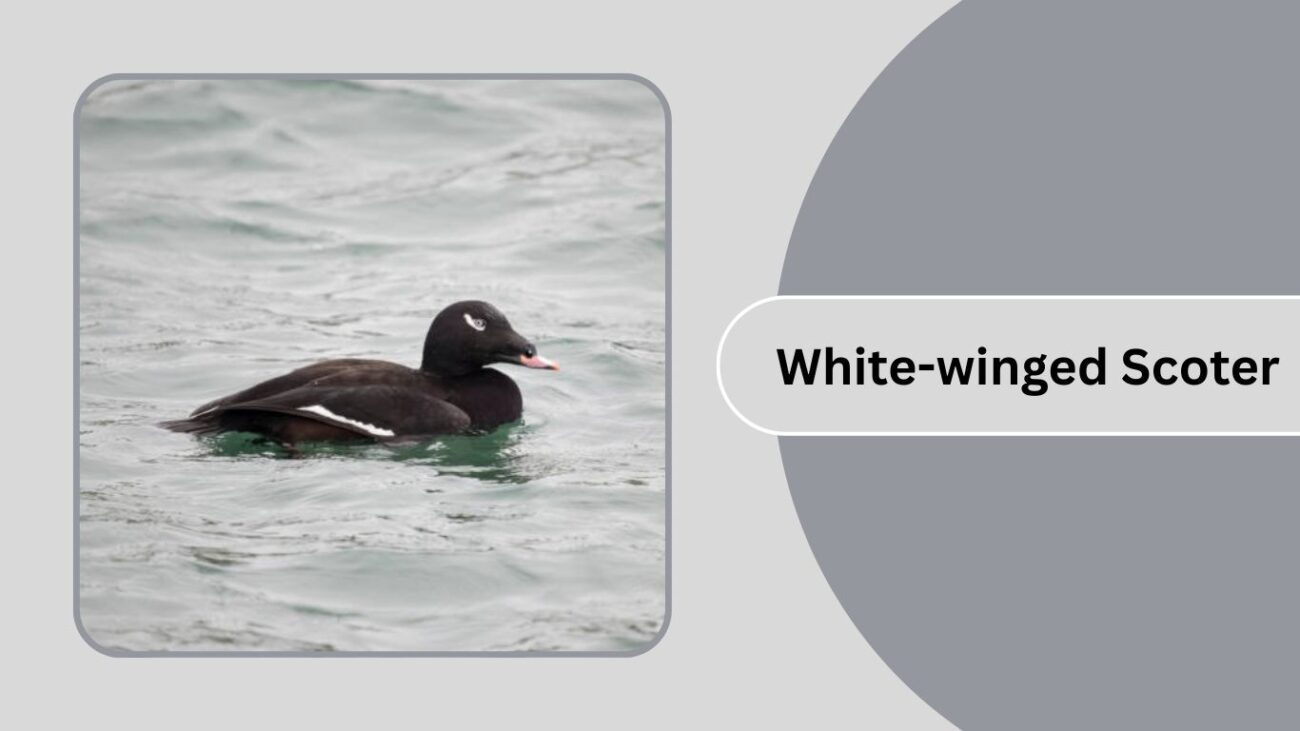Ducks are among the most diverse and widespread waterfowl, inhabiting wetlands, rivers, lakes, and coastal regions across the globe. From the familiar Mallard to the striking King Eider, each species has its own unique appearance, habitat preference, and behavior. In this guide, we explore 27 distinct duck species, providing detailed identification tips and insights into their lifestyle, helping bird enthusiasts recognize and appreciate these remarkable birds in the wild.
1. Mallard
The Mallard (Anas platyrhynchos) is one of the most familiar and widespread duck species in the world. Known for its adaptability, it thrives in a variety of freshwater habitats, from lakes and rivers to marshes and city ponds. Its recognizable plumage and loud quacks make it a favorite among birdwatchers and casual observers alike.
Identification
- Size: 50–65 cm (20–26 in) in length
- Male (breeding): Iridescent green head, white neck ring, chestnut-brown breast, gray body, black tail with curled central feathers, bright yellow bill
- Female: Mottled brown overall with orange-and-brown bill
- Both sexes: Blue speculum (wing patch) bordered by white, visible in flight and at rest
- Eyes: Dark and rounded
Habitat & Distribution
Mallards are found across North America, Europe, Asia, and parts of Africa. They inhabit wetlands, lakes, ponds, rivers, estuaries, and even urban waterways, showing a high tolerance for human presence.
Behavior & Diet
Mallards are dabbling ducks, feeding mainly at the water’s surface or tipping forward to reach aquatic plants, seeds, and invertebrates. They also forage on land for grains and vegetation. They are highly social and often form mixed flocks with other duck species in winter.
Vocalizations
Females give the classic loud “quack” call, while males produce softer, rasping notes and whistles, especially during courtship.
2. Northern Pintail
The Northern Pintail (Anas acuta) is an elegant, long-necked dabbling duck admired for its graceful shape and swift flight. Its slender body and distinctive tail feathers give it a sleek appearance, making it one of the most recognizable ducks in open wetlands and shallow waters.
Identification
- Size: 51–76 cm (20–30 in) in length
- Male (breeding): Chocolate-brown head, white neck and breast, gray body, long central tail feathers (up to 10 cm/4 in), black bill with blue-gray sides
- Female: Mottled brown with a more subtle pattern, pointed tail, and duller bill
- Both sexes: Long, narrow neck and pointed tail, blue-gray bill, gray legs and feet
Habitat & Distribution
Northern Pintails are found across North America, Europe, and Asia. They breed in open wetlands, grasslands, and tundra, preferring shallow marshes and lakes. In winter, they migrate south to warmer regions, including Central and South America, Africa, and southern Asia.
Behavior & Diet
They are dabbling ducks that feed by tipping forward in shallow water to graze on aquatic plants, seeds, and small invertebrates. They are strong, fast fliers and often migrate in large flocks. Males perform elegant courtship displays, stretching their necks and flicking their tails.
Vocalizations
The male’s call is a soft, rolling whistle, while the female produces a low, quacking sound similar to a Mallard but softer and more subdued.
3. Gadwall
The Gadwall (Mareca strepera) is a subtly beautiful dabbling duck, often overlooked because of its understated plumage. Upon closer inspection, its fine patterns, elegant shape, and graceful behavior make it a favorite among seasoned birdwatchers.
Identification
- Size: 46–56 cm (18–22 in) in length
- Male: Gray-brown body with intricate fine barring, black rump, white wing patch (speculum) visible in flight, dark bill
- Female: Mottled brown, similar to a female Mallard but with thinner bill and white wing patch
- Both sexes: Slim profile with slightly rounded head, pale belly, and long neck
Habitat & Distribution
Found across North America, Europe, and Asia, Gadwalls inhabit lakes, marshes, ponds, and reservoirs with abundant vegetation. They breed in prairie wetlands, grasslands, and tundra regions, migrating south in winter to temperate and subtropical climates.
Behavior & Diet
Primarily herbivorous, Gadwalls feed on aquatic vegetation such as pondweed, algae, and grasses, often dipping their heads below the surface rather than fully tipping up. They are dabbling ducks but also steal food from diving ducks like coots.
Vocalizations
Males produce a short, reedy “nheck” call, while females give a quacking call similar to Mallards but lower and softer.
4. American Wigeon
The American Wigeon (Mareca americana) is a medium-sized dabbling duck known for its distinctive head markings and whistling calls. Sometimes called the “baldpate” due to the male’s pale crown, it is a common sight in wetlands across North America, especially during migration and winter.
Identification
- Size: 42–59 cm (16.5–23.2 in) in length
- Male: Pinkish-brown body, bright white crown, iridescent green patch from the eye to the back of the head, white shoulder patch, gray bill with black tip
- Female: Warm brown overall with subtle pale crown, grayish bill with black tip
- Both sexes: White belly, pointed tail, and light blue-gray bill with black tip
Habitat & Distribution
Breeds in prairie potholes, marshes, and wetlands across northwestern North America, especially in Canada and Alaska. Winters in the southern United States, Mexico, Central America, and occasionally in the Caribbean, often favoring lakes, ponds, and coastal marshes.
Behavior & Diet
Primarily herbivorous, American Wigeons graze on grasses and aquatic vegetation more than most dabbling ducks, sometimes even feeding on land like geese. They also eat seeds and insects, and are known to snatch plant matter from diving ducks.
Vocalizations
The male’s call is a high-pitched, three-note whistle, while the female gives a low, grating “quack” sound.
5. Eurasian Wigeon
The Eurasian Wigeon (Mareca penelope) is a graceful dabbling duck known for its warm-toned plumage and high-pitched whistling calls. It is closely related to the American Wigeon, but its distinctive coloration makes it easy to tell apart, especially in males.
Identification
- Size: 45–51 cm (17.7–20 in) in length
- Male: Reddish-brown head with a creamy-white crown, gray body, pinkish breast, black rear end, and white wing patch visible in flight; pale bluish-gray bill with black tip
- Female: Mottled brown overall with a subtle pale crown and a less contrasting body pattern
- Both sexes: White belly, pointed tail, and blue-gray bill with black tip
Habitat & Distribution
Breeds across northern Europe and Asia in wetlands, lakes, and marshes surrounded by grassland or tundra. Migrates south in winter to parts of southern Europe, Africa, the Middle East, South Asia, and occasionally to North America, where it is a rare but regular visitor.
Behavior & Diet
Feeds mostly on aquatic plants, grasses, and algae, often grazing on land like geese. Also eats seeds, grains, and small invertebrates. In winter, they often form large mixed flocks with other duck species.
Vocalizations
The male’s call is a distinctive, whistling “wee-oo-wee-oo,” while the female produces a low growling quack.
6. Green-winged Teal
The Green-winged Teal (Anas crecca) is the smallest dabbling duck in North America, admired for its compact size, fast flight, and striking plumage. Despite its small stature, it is one of the most abundant and widespread waterfowl species, especially during migration.
Identification
- Size: 31–39 cm (12–15 in) in length
- Male (breeding): Chestnut head with a bold iridescent green eye patch, gray body, vertical white stripe on the side, and a green speculum (wing patch)
- Female: Mottled brown overall with a green speculum and dark eye line
- Both sexes: Short neck, small bill, and compact body shape
Habitat & Distribution
Breeds across northern North America in shallow wetlands, prairie potholes, and tundra ponds. Winters in the southern United States, Mexico, Central America, and parts of the Caribbean, often gathering in large flocks in shallow marshes, estuaries, and flooded fields.
Behavior & Diet
Feeds by dabbling and tipping up in shallow water, consuming seeds of aquatic plants, grasses, and invertebrates such as insects and crustaceans. Highly social in migration and winter, often mixing with other small duck species.
Vocalizations
Males produce a short, whistled “crick-crick” call, while females give a soft quacking sound, often used to keep contact within flocks.
7. Blue-winged Teal
The Blue-winged Teal (Spatula discors) is a small, fast-flying dabbling duck easily recognized during flight by its distinctive blue shoulder patches. It is one of the earliest ducks to migrate south in the fall and among the last to return in spring.
Identification
- Size: 38–41 cm (15–16 in) in length
- Male (breeding): Grayish-blue head with a bold white crescent in front of the eye, mottled brown body, black rear, and pale blue shoulder patches with green speculum
- Female: Mottled brown overall with a faint eye line and pale blue shoulder patch in flight
- Both sexes: Compact body, small bill, and relatively short tail
Habitat & Distribution
Breeds in shallow ponds, marshes, and prairie potholes across much of North America, especially in the northern prairies and wetlands. Winters in the southern United States, Mexico, Central America, the Caribbean, and South America, often in shallow wetlands and flooded fields.
Behavior & Diet
Feeds mainly by dabbling and filter-feeding in shallow water, consuming seeds of aquatic plants, algae, and small invertebrates. Highly social outside the breeding season, often found in mixed flocks with other small dabbling ducks.
Vocalizations
Males give a high-pitched, peeping whistle, while females produce soft, low quacks. Vocal activity increases during courtship and migration.
8. Cinnamon Teal
The Cinnamon Teal (Spatula cyanoptera) is a small, vibrantly colored dabbling duck, especially striking in the breeding male’s deep reddish-brown plumage. Its combination of rich colors and compact size makes it a favorite sighting among waterfowl enthusiasts.
Identification
- Size: 36–43 cm (14–17 in) in length
- Male (breeding): Deep cinnamon-red head, neck, breast, and body; red eyes; black bill; pale blue shoulder patches with a green speculum
- Female: Mottled brown overall, similar to female Blue-winged Teal but slightly larger with a longer, heavier bill
- Both sexes: Short neck, long body, and slightly upturned bill
Habitat & Distribution
Breeds in shallow wetlands, marshes, and ponds across the western United States, southwestern Canada, and parts of Central and South America. Northern populations migrate south in winter, reaching as far as Chile and Argentina.
Behavior & Diet
Feeds mainly by dabbling in shallow water, consuming aquatic plants, seeds, and small invertebrates. Often forages at dawn and dusk, resting during midday. Outside of breeding season, Cinnamon Teals often mix with other small dabbling ducks.
Vocalizations
Males produce a soft, whistled “peep” during courtship, while females give low quacking calls, particularly when communicating with ducklings or alerting to danger.
9. Northern Shoveler
The Northern Shoveler (Spatula clypeata) is a medium-sized dabbling duck instantly recognized by its oversized, spoon-shaped bill. This unique bill structure, combined with striking breeding plumage, makes it one of the most distinctive ducks in the world. Known for its filter-feeding habits, it is often seen swimming slowly in circles while straining food from the water’s surface.
Identification
- Size: 44–53 cm (17–21 in) in length
- Male (breeding): Iridescent green head, bright white breast, chestnut sides, black back, and large spatula-shaped black bill; yellow eyes
- Female: Mottled brown overall with large orange-brown spatula-shaped bill; brown eyes
- Both sexes: Blue-gray shoulder patches with white borders, green speculum visible in flight, long neck, and flat body
Habitat & Distribution
Breeds in shallow wetlands, prairie potholes, and marshes across North America, Europe, and Asia. Winters in the southern United States, Mexico, Central America, Africa, southern Asia, and parts of the Mediterranean. Prefers shallow, nutrient-rich wetlands with abundant aquatic plants and invertebrates.
Behavior & Diet
Specialized for filter-feeding, Northern Shovelers use their large bills, lined with comb-like lamellae, to strain small aquatic invertebrates, seeds, and plankton from the water. They often swim in slow circles to stir up food, sometimes feeding cooperatively in small groups.
Vocalizations
Males give a soft, nasal “took-took” or “took-a-took” call, especially during courtship. Females produce loud quacking notes, similar to a Mallard but deeper and slightly raspier.
10. Wood Duck
The Wood Duck (Aix sponsa) is one of the most colorful and ornate waterfowl species in North America, admired for its iridescent plumage and unique nesting habits. Unlike most ducks, it readily nests in tree cavities and will even use nest boxes provided by humans. Its beauty and adaptability make it a favorite among birdwatchers and conservationists.
Identification
- Size: 47–54 cm (18.5–21.3 in) in length
- Male (breeding): Iridescent green and purple head with bold white stripes, red eyes, chestnut breast, buff sides, metallic blue-black back, and distinctive crest; bill is red with yellow at the base and a black tip
- Female: Gray-brown with a white teardrop eye ring, subtle crest, white throat, and more muted body colors
- Both sexes: Long tail, broad wings, and unique perching feet adapted for gripping branches
Habitat & Distribution
Breeds in wooded swamps, freshwater marshes, ponds, and slow-moving rivers across much of eastern North America, the Pacific Coast, and scattered areas in the interior. Prefers areas with abundant trees for nesting and dense aquatic vegetation for feeding. Winters in the southern United States, Mexico, and occasionally as far south as Central America.
Behavior & Diet
Wood Ducks are dabbling ducks but have a more varied diet than most. They feed on seeds, acorns, fruits, aquatic plants, and invertebrates. In autumn, they consume large quantities of acorns and other nuts, often feeding in flooded bottomlands. Known for perching in trees and nesting in cavities, they will also jump from great heights as ducklings soon after hatching, landing unharmed.
Vocalizations
Females give a sharp, rising “oo-eek” call, often used in alarm. Males produce a thin, rising whistle and various squeals during courtship. Their calls are distinct and carry well in wooded wetland habitats.
11. Mandarin Duck
The Mandarin Duck (Aix galericulata) is one of the most visually stunning duck species in the world, renowned for the male’s ornate, multicolored plumage and elaborate courtship displays. Closely related to the Wood Duck, it also nests in tree cavities and is often found in wooded wetlands. This species holds cultural significance in East Asia, symbolizing love and fidelity.
Identification
- Size: 41–49 cm (16–19 in) in length
- Male (breeding): Striking mix of orange “sail” feathers on the back, iridescent green and purple head, white crescent above the eye, reddish bill, orange neck frill, and chestnut flanks; metallic blue, green, and bronze highlights throughout
- Female: Elegant gray-brown with white speckling on breast, white eye ring, and pale underparts; lacks ornamental feathers but has a graceful profile
- Both sexes: Short tail, compact body, and perching feet adapted for gripping branches
Habitat & Distribution
Native to East Asia, breeding in Russia, China, Korea, and Japan, Mandarin Ducks prefer wooded rivers, lakes, and marshes. They have also established introduced populations in Europe, particularly in the UK, and some parts of North America. They favor quiet wetlands with overhanging trees for nesting.
Behavior & Diet
Mandarin Ducks are dabblers that feed on seeds, grains, aquatic plants, insects, and snails. In autumn and winter, they eat more acorns and seeds, foraging along the water’s edge. They nest in tree cavities, sometimes far from water, with ducklings leaping from the nest to follow the mother. Males perform dramatic courtship displays, fanning their sails, bobbing heads, and raising crests to attract females.
Vocalizations
Males emit a soft, squeaky whistle during courtship, while females produce low quacks and cooing notes, particularly when communicating with their young.
12. Redhead
The Redhead (Aythya americana) is a medium-sized diving duck known for the male’s rich chestnut head and striking profile. It is often seen in flocks during migration and winter, sometimes mixing with other diving ducks. Its preference for shallow, vegetated wetlands makes it a common sight in prairie regions during the breeding season.
Identification
- Size: 37–56 cm (15–22 in) in length
- Male: Bright reddish-brown head, black breast, gray back and sides, yellow eyes, and a blue-gray bill tipped with black
- Female: Uniform warm brown with a pale face, dark eyes, and the same blue-gray bill with black tip
- Both sexes: Rounded head profile, short tail, and relatively compact diving duck body shape
Habitat & Distribution
Breeds in prairie potholes, shallow marshes, and large lakes across the northern Great Plains, western Canada, and parts of Alaska. Winters in the southern United States, Mexico, and occasionally the Caribbean, favoring coastal bays, estuaries, and inland lakes.
Behavior & Diet
Primarily a diving duck, but will also dabble in shallow water. Feeds on aquatic plants, seeds, and tubers, as well as mollusks, insects, and other invertebrates. Often seen in large, dense flocks, especially during migration. Courtship displays include head-throwing and bill-dipping.
Vocalizations
Males give a soft “whee-ooo” call during courtship, while females produce a series of low quacks, especially when communicating with ducklings or in alarm situations.
13. Canvasback
The Canvasback (Aythya valisineria) is a large, elegant diving duck named for the male’s pale, canvas-like back. Known for its long, sloping head profile and powerful diving ability, it is often considered one of the most distinctive and beautiful waterfowl species in North America.
Identification
- Size: 48–56 cm (19–22 in) in length
- Male: Chestnut-red head and neck, black breast, pale grayish-white back (resembling canvas), black tail, red eyes, and a long, sloping black bill
- Female: Light brown head and neck, pale buff-gray body, dark eyes, and a similar bill shape to the male but slightly duller overall
- Both sexes: Streamlined body, long neck, and sloping forehead-to-bill profile
Habitat & Distribution
Breeds in prairie pothole regions, marshes, and large freshwater lakes across the northern United States, Canada, and Alaska. Winters along both U.S. coasts, the Gulf of Mexico, and large inland lakes. Prefers deeper wetlands than many dabbling ducks, often in areas with abundant submerged vegetation.
Behavior & Diet
Canvasbacks are skilled divers, feeding primarily on aquatic plants such as wild celery (Vallisneria americana), pondweeds, and tubers, but they also consume insects, mollusks, and small crustaceans. They dive deeply and can remain underwater for extended periods. Often found in mixed flocks with other diving ducks, particularly Redheads and Scaup.
Vocalizations
Males produce a soft, rolling “coo” during courtship, while females emit a loud “krrr” or “crok” call when alarmed or communicating with ducklings.
14. Ring-necked Duck
The Ring-necked Duck (Aythya collaris) is a medium-sized diving duck named for the faint, chestnut-colored ring around the male’s neck—a feature often difficult to see in the field. More conspicuous are its peaked head shape and striking bill pattern, which make it easy to identify compared to other diving ducks.
Identification
- Size: 39–46 cm (15–18 in) in length
- Male: Glossy black head, neck, breast, and back; gray sides with white wedge between the breast and sides; pale gray bill with a bold white ring near the tip and black tip; golden-yellow eyes
- Female: Warm brown body with a paler face, white eye ring, and the same distinctive bill pattern (though duller)
- Both sexes: Tall, peaked head profile and relatively short tail
Habitat & Distribution
Breeds in freshwater marshes, ponds, and small lakes with emergent vegetation across much of Canada and the northern United States. Winters in the southern U.S., Mexico, Central America, and the Caribbean, often gathering in large flocks on lakes, reservoirs, and coastal estuaries.
Behavior & Diet
Ring-necked Ducks are skilled divers, feeding mainly on aquatic plants, seeds, and tubers, along with mollusks, aquatic insects, and other invertebrates. They often feed in slightly shallower water than Canvasbacks or Redheads. During migration and winter, they are highly social, often found in mixed flocks with scaup and other divers.
Vocalizations
Males produce a low, rolling “purr” or “prrr” sound during courtship, while females give a loud, descending “qua-ack” when alarmed or calling to ducklings.
15. Greater Scaup
The Greater Scaup (Aythya marila) is a robust diving duck often found in large flocks during migration and winter. Known for its rounded head and distinctive blue bill, it is frequently seen alongside its close relative, the Lesser Scaup, but can be distinguished by its bulkier build and slightly different head shape.
Identification
- Size: 42–51 cm (16.5–20 in) in length
- Male: Glossy greenish-black head, bright yellow eyes, black breast, pale gray back and sides, white flanks, and a blue-gray bill with a black nail at the tip
- Female: Brown body with a distinct white patch at the base of the bill, yellow eyes, and the same blue bill with black tip
- Both sexes: Rounded head profile, strong body, and white wing stripe extending into the primary feathers (a key difference from Lesser Scaup)
Habitat & Distribution
Breeds in northern tundra wetlands, lakes, and coastal ponds across Alaska, northern Canada, and parts of Eurasia. Winters along North American coasts, large inland lakes, and in sheltered bays. They are highly migratory, with some traveling thousands of kilometers between breeding and wintering grounds.
Behavior & Diet
Greater Scaups are expert divers, feeding primarily on mollusks such as clams and mussels, as well as aquatic plants, insects, and crustaceans. They often dive to significant depths and can stay underwater for extended periods while foraging. They are highly gregarious in winter, sometimes forming flocks of thousands.
Vocalizations
Generally quiet, but males produce a soft, whistled “whee-oo” during courtship, while females make a low, gruff “arrr” call, especially when disturbed or communicating with young.
16. Lesser Scaup
The Lesser Scaup (Aythya affinis) is a medium-sized diving duck closely resembling the Greater Scaup, but slightly smaller with subtle differences in head shape and wing markings. It is one of the most abundant diving ducks in North America, often seen in large flocks during migration and winter.
Identification
- Size: 38–48 cm (15–19 in) in length
- Male: Glossy purplish-black head (can appear green in certain light), yellow eyes, black breast, gray back and sides with fine vermiculation, white flanks, blue-gray bill with black tip
- Female: Brown body with a prominent white patch at the base of the bill, yellow eyes, and a blue-gray bill with black tip
- Both sexes: Slightly peaked head (compared to Greater Scaup’s rounder profile), and white wing stripe limited mostly to the secondaries in flight
Habitat & Distribution
Breeds in freshwater marshes, prairie potholes, and tundra ponds across western Canada, Alaska, and parts of the northern United States. Winters in southern U.S. states, Mexico, Central America, and the Caribbean, favoring lakes, reservoirs, estuaries, and sheltered coastal bays.
Behavior & Diet
Lesser Scaups are strong divers, feeding on aquatic invertebrates such as mollusks, crustaceans, and insect larvae, as well as aquatic plants and seeds. They forage in both fresh and brackish water, often diving repeatedly in quick succession. During migration and winter, they are highly social and form large mixed flocks with other diving ducks.
Vocalizations
Generally quiet, but males make a soft, whistled “we-oo” during courtship, while females produce low, gruff “scaup” or “arrr” notes, especially when alarmed or herding ducklings.
17. Common Goldeneye
The Common Goldeneye (Bucephala clangula) is a striking medium-sized diving duck named for its bright yellow eyes. Known for its crisp black-and-white plumage and distinctive head shape, it is a favorite among winter waterfowl watchers. Males are especially eye-catching in breeding plumage, while both sexes are expert divers and strong fliers.
Identification
- Size: 40–51 cm (16–20 in) in length
- Male: Glossy greenish-black head with a round white spot at the base of the bill, bright yellow eyes, white body, black back, black-and-white patterned wings, and gray legs
- Female: Chocolate-brown head, gray body, white collar around the neck, yellowish eyes (which may be pale in younger birds), and a mostly dark bill with yellow tip
- Both sexes: Short, triangular bill, large head with steep forehead, and rapid wingbeats in flight
Habitat & Distribution
Breeds in boreal forests across Canada, Alaska, and northern Eurasia, favoring lakes, rivers, and ponds with nearby trees for nesting. Winters on large lakes, rivers, and coastal bays throughout much of the U.S., southern Canada, Europe, and Asia. Nests almost exclusively in tree cavities, often using old woodpecker holes or nest boxes.
Behavior & Diet
Feeds mainly by diving, consuming aquatic invertebrates such as insects, mollusks, and crustaceans, as well as small fish and aquatic plants. Often forages in deeper waters than dabbling ducks, diving repeatedly to the bottom. Males perform elaborate courtship displays that include head-throwing, splashing, and calling.
Vocalizations
Generally quiet outside the breeding season, but males produce a sharp, high-pitched “peent” or “pew” sound during displays. Females emit harsh, grating “gack” or “gak-gak” calls, especially when alarmed or defending broods.
18. Barrow’s Goldeneye
The Barrow’s Goldeneye (Bucephala islandica) is a striking diving duck closely related to the Common Goldeneye but less widespread and more specialized in its habitat preferences. Known for its bold black-and-white plumage and bright yellow eyes, it is a favorite among birders in its limited breeding range.
Identification
- Size: 40–51 cm (16–20 in) in length
- Male: Glossy purplish-black head with a crescent-shaped white patch in front of the eye (taller and narrower than the round spot of the Common Goldeneye), black back, white sides, black-and-white patterned wings, and bright yellow eyes
- Female: Chocolate-brown head, grayish body, white collar around the neck, and a shorter, stubbier bill that is more orange-yellow than in Common Goldeneye females
- Both sexes: Stocky body, large head, and rapid wingbeats in flight; slightly steeper forehead than Common Goldeneye
Habitat & Distribution
Breeds mainly in the northwestern parts of North America, Iceland, and scattered areas in Greenland. In North America, it nests in tree cavities near clear, cold lakes and rivers in forested or mountainous regions. Winters on coastal bays, estuaries, and large inland lakes, often in smaller flocks than Common Goldeneyes.
Behavior & Diet
Feeds primarily by diving for aquatic invertebrates, especially insects and crustaceans, along with mollusks, small fish, and aquatic plants. Often forages near rocky shorelines and underwater vegetation. Males perform elaborate courtship displays similar to Common Goldeneye, involving head-throwing, splashing, and calls.
Vocalizations
Males give a low, croaking “crok” or “grrr” sound during displays, while females produce short, rasping “gak-gak” calls, particularly in alarm or when tending to young.
19. Bufflehead
The Bufflehead (Bucephala albeola) is a small, striking diving duck admired for its bold black-and-white plumage and compact, energetic appearance. It is the smallest diving duck in North America and is well known for its fast, direct flight and active foraging style.
Identification
- Size: 32–40 cm (12.5–16 in) in length
- Male: Glossy black head with an iridescent green and purple sheen and a large white patch extending from behind the eye to the back of the head; white underparts; black back; short, dark bill; pinkish legs and feet
- Female: Brownish head and body with a small white cheek patch; darker back; more muted overall appearance
- Both sexes: Compact body, short neck, and relatively large, rounded head
Habitat & Distribution
Breeds mainly in boreal forest ponds and small lakes across Canada and Alaska, nesting almost exclusively in tree cavities, especially those excavated by Northern Flickers. Winters along both coasts of North America, the southern U.S., and Mexico, frequenting sheltered bays, estuaries, and inland lakes that remain unfrozen.
Behavior & Diet
Feeds by diving for aquatic invertebrates, especially insects, crustaceans, and mollusks, as well as seeds and aquatic vegetation. Buffleheads are agile swimmers and can dive for 10–25 seconds, resurfacing quickly to swallow food. They are monogamous, often keeping the same mate for several years.
Vocalizations
Generally quiet, but males make a low, squeaky “gk-gk-gk” during courtship, while females produce a soft “karr” or “brrr” sound, particularly in flight or when alarmed.
20. Ruddy Duck
The Ruddy Duck (Oxyura jamaicensis) is a small, stout diving duck best known for the male’s bright breeding colors and stiff, upright tail. This tail—often held cocked above the water—along with its compact size and unique courtship displays, makes it one of the most easily recognized ducks in North America.
Identification
- Size: 36–43 cm (14–17 in) in length
- Male (breeding): Rich chestnut body, brilliant sky-blue bill, blackish cap, bright white cheeks, and a stiff black tail often held erect
- Male (nonbreeding): Duller brown body, gray bill, retains white cheeks but with less contrast
- Female: Mottled brown overall with a dark cap, pale cheeks crossed by a darker horizontal line, and a grayish bill
- Both sexes: Compact body, long tail, and low, flattened head profile
Habitat & Distribution
Breeds in marshes, prairie potholes, and shallow lakes with dense emergent vegetation across western and central North America. Winters in ice-free lakes, reservoirs, and sheltered coastal bays of the southern U.S., Mexico, Central America, and the Caribbean. Prefers areas with plenty of aquatic vegetation and invertebrate-rich waters.
Behavior & Diet
Primarily feeds by diving, consuming aquatic invertebrates such as midge larvae, crustaceans, and snails, as well as seeds and aquatic plants. Males perform dramatic courtship displays, including beating their bills against their chests to create bubbles and producing a distinctive display call. They are also known for being aggressive defenders of their nests and mates.
Vocalizations
Generally quiet, but breeding males produce a series of low, popping notes during display. Females may give a short, nasal quack when alarmed or communicating with ducklings.
21. Harlequin Duck
The Harlequin Duck (Histrionicus histrionicus) is a small, sturdy sea duck famous for its spectacular plumage and ability to thrive in fast-moving waters. Nicknamed the “sea mouse” for its squeaky calls, it is one of the most striking and unique ducks in the world, both in appearance and lifestyle.
Identification
- Size: 38–48 cm (15–19 in) in length
- Male (breeding): Slate-blue body with bold white markings on the head, neck, and sides; chestnut flanks; white crescent in front of the eye; white patches behind the head; and striking black outlines accentuating all markings
- Male (nonbreeding): Duller and browner overall but still retains some of the white markings
- Female: Brown overall with three distinct white facial spots—one in front of the eye, one behind, and one below the ear
- Both sexes: Short bill, compact body, and strong wings adapted for swift water
Habitat & Distribution
Breeds along turbulent rivers and streams in northern and mountainous regions of North America, Greenland, Iceland, and eastern Russia. Winters along rocky coastlines, especially in the North Pacific and North Atlantic. In North America, notable populations are found along the coasts of Alaska, British Columbia, and the northeastern U.S.
Behavior & Diet
Feeds mainly on aquatic invertebrates such as crustaceans, mollusks, and insect larvae, diving and swimming expertly in rough, fast-flowing waters. In breeding areas, they forage in rapids and whitewater streams, while in winter they feed among kelp beds and rocky shorelines in the surf. Harlequin Ducks are monogamous and often return to the same nesting and wintering sites each year.
Vocalizations
Males emit a high-pitched, squeaky whistle, giving rise to their “sea mouse” nickname. Females produce soft clucking or growling notes, especially when alerting ducklings or in territorial defense.
22. Long-tailed Duck
The Long-tailed Duck (Clangula hyemalis) is a striking and highly specialized sea duck, easily recognized by its long, elegant tail feathers in males and its remarkable plumage changes between breeding and winter seasons. Renowned for its deep-diving ability, it is one of the most proficient underwater foragers among ducks.
Identification
- Size: 38–58 cm (15–23 in) in length (males appear longer due to tail streamers)
- Male (breeding): White head and neck with a dark cheek patch, black breast, long black tail streamers, and mostly dark upperparts; reddish-brown patches on the back and flanks
- Male (winter): Mostly white head and neck with a dark crown and cheek patch, shorter tail streamers, and black-and-white body pattern
- Female (breeding): Brownish overall with pale face and neck, white underparts, and no long tail feathers
- Female (winter): White head with a dark crown and cheek, grayish-brown back, and pale underparts
- Both sexes: Small bill with a pink band (more prominent in males), compact body, and strong, narrow wings
Habitat & Distribution
Breeds in Arctic tundra regions of North America, Europe, and Asia, favoring freshwater tundra lakes and pools. Winters primarily in northern coastal waters, often far offshore in the North Atlantic and North Pacific. Large flocks can be seen in bays, estuaries, and along rocky coasts.
Behavior & Diet
One of the deepest-diving ducks, capable of reaching depths over 60 meters (200 feet) to forage. Diet consists mainly of marine invertebrates such as crustaceans, mollusks, and small fish in winter; in summer, feeds on aquatic insects and larvae. Known for being highly vocal, even in winter flocks, and for its fast, direct flight over water.
Vocalizations
Famed for its yodel-like calls, especially the male’s musical, plaintive “ow-ow-owlee” or “ah-lek-ah-lek” notes, often heard over wintering grounds and during courtship flights in the Arctic.
23. Common Eider
The Common Eider (Somateria mollissima) is the largest duck species in the Northern Hemisphere and a true icon of Arctic and subarctic coastlines. Known for its striking plumage, gentle demeanor, and valuable down, it has long been significant to coastal communities both culturally and economically.
Identification
- Size: 50–71 cm (20–28 in) in length, wingspan up to 110 cm (43 in)
- Male (breeding): Bold black-and-white plumage with a clean white back and flanks, black belly, and a pale green wash on the nape; wedge-shaped head with long, sloping bill
- Male (nonbreeding): Darker brown body with white mottling and traces of breeding colors
- Female: Warm brown with dense dark barring, cryptically patterned for camouflage on nesting sites
- Both sexes: Large body, short tail, strong wedge-shaped bill adapted for mollusk feeding
Habitat & Distribution
Breeds in Arctic and subarctic coastal areas across North America, Europe, and eastern Siberia. Prefers rocky coasts, islands, and tundra edges for nesting. Winters mainly in cold, shallow coastal waters, bays, and estuaries, often near mussel beds.
Behavior & Diet
A specialist feeder on marine mollusks, particularly mussels, which it swallows whole—shell and all—using its powerful gizzard to crush them. Also takes crustaceans, echinoderms, and small fish. Common Eiders dive frequently in shallow coastal zones and can stay submerged for up to a minute. Females often nest in colonies, lining their nests with the famous soft eiderdown plucked from their own breasts to insulate the eggs.
Vocalizations
Males produce a gentle, cooing “ah-oo” call, especially during courtship, while females give a series of deep, throaty clucks and growls, particularly when defending nests or leading ducklings.
24. King Eider
The King Eider (Somateria spectabilis) is a spectacularly colored sea duck that inhabits some of the most remote and frigid waters in the Northern Hemisphere. Its ornate head pattern and thick, colorful bill make the male one of the most distinctive ducks in the world.
Identification
- Size: 50–70 cm (20–28 in) in length, wingspan about 86–102 cm (34–40 in)
- Male (breeding): Pale blue crown and nape, bold orange frontal shield above the bright red bill, black body, white breast and back, and greenish cheeks
- Male (nonbreeding): Dark brown overall with traces of white on the wings and muted facial colors
- Female: Mottled warm brown with heavy barring, shorter bill, and subtle facial pattern for excellent camouflage
- Both sexes: Large, stocky body adapted for cold waters and strong diving, with a wedge-shaped bill suited to crushing mollusks
Habitat & Distribution
Breeds in the high Arctic across North America, Greenland, and Eurasia, favoring tundra ponds and coastal wetlands near the sea. Winters mostly in subarctic and Arctic coastal waters, often in large, dense flocks offshore, sometimes mixed with Common Eiders.
Behavior & Diet
Feeds primarily on marine mollusks, especially clams and mussels, as well as sea urchins, crustaceans, and small fish. Dives to the sea floor in depths up to 25 meters (82 feet), using strong legs and wings for propulsion. In breeding season, nests are lined with down and placed near water for quick access to feeding areas.
Vocalizations
Males produce a low, purring coo during courtship, while females make soft clucks and growls, particularly when defending nests or communicating with ducklings.
25. Surf Scoter
The Surf Scoter (Melanitta perspicillata) is a large, hardy sea duck often seen riding ocean swells in coastal waters. Known for the male’s striking “clown-like” bill pattern, this species is a common winter visitor along both North American coasts.
Identification
- Size: 48–60 cm (19–24 in) in length, wingspan about 76–91 cm (30–36 in)
- Male: Velvety black plumage, large swollen bill patterned in orange, white, and black, white patches on the forehead and nape, and dark eyes
- Female: Dark brown overall with two pale facial patches and a smaller, plainer bill
- Both sexes: Stocky body, thick neck, and strong, broad wings adapted for long flights over open water
Habitat & Distribution
Breeds in freshwater lakes and ponds across northern Canada and Alaska, usually in forested or tundra regions. Winters along both the Atlantic and Pacific coasts, particularly in bays, estuaries, and nearshore ocean waters, often in large flocks mixed with other scoter species.
Behavior & Diet
Feeds primarily by diving for marine mollusks, especially mussels and clams, as well as crustaceans and small fish. In breeding areas, they consume more aquatic insects and freshwater plants. They are powerful divers, using their strong legs to reach the sea floor. Surf Scoters are known for forming dense rafts on the water, sometimes numbering in the thousands.
Vocalizations
Generally quiet at sea, but males produce a series of low, gurgling notes during courtship, while females give short, rasping calls, particularly in breeding areas.
26. White-winged Scoter
The White-winged Scoter (Melanitta deglandi) is the largest of the three North American scoter species, easily recognized by its bold white wing patches visible in flight. This hardy sea duck spends much of its life in cold northern waters, migrating long distances between breeding and wintering grounds.
Identification
- Size: 53–60 cm (21–24 in) in length, wingspan about 92–99 cm (36–39 in)
- Male: Dark blackish-brown plumage, large sloping bill with orange and black coloring, distinct white comma-shaped mark behind the eye, and prominent white wing patches visible both at rest and in flight
- Female: Dark brown overall with two pale facial patches (before and behind the eye) and slightly smaller wing patches
- Both sexes: Robust body, thick neck, and strong wings adapted for long flights over open water
Habitat & Distribution
Breeds on large freshwater lakes in boreal forests and tundra regions of Canada and Alaska. Winters along the coasts of North America, from Alaska and British Columbia south to California on the Pacific side, and from Newfoundland to the mid-Atlantic U.S. on the Atlantic side. Often forms large rafts in bays, estuaries, and coastal waters.
Behavior & Diet
Feeds mainly on marine mollusks such as mussels and clams during winter, using its powerful diving ability to forage at depths of up to 20 meters (66 feet). In breeding areas, the diet shifts more toward aquatic insects, crustaceans, and freshwater plants. Known for its endurance, this species can migrate thousands of kilometers between seasonal habitats.
Vocalizations
Generally silent outside breeding season, but males give a series of low, whistled notes during courtship, while females emit guttural croaks and clucks, especially when alerting ducklings or defending territories.
27. Black Scoter
The Black Scoter (Melanitta americana) is a hardy sea duck well adapted to the cold, choppy waters of northern coasts. It is the smallest of the North American scoters and is often found in compact flocks close to shore, especially during migration and winter.
Identification
- Size: 43–49 cm (17–19 in) in length, wingspan about 71–91 cm (28–36 in)
- Male: Uniform black plumage with a distinctive swollen orange-yellow knob at the base of the bill
- Female: Dark brown overall with paler cheeks and neck, and a smaller, darker bill without the prominent knob
- Both sexes: Compact, rounded body shape, short tail, and strong wings suited for long-distance coastal flights
Habitat & Distribution
Breeds on large freshwater lakes and ponds in tundra and boreal forest regions of Alaska and northern Canada, often in remote, open areas. Winters mainly along the Atlantic coast from Newfoundland to the southeastern U.S., and along the Pacific coast from Alaska to Baja California. Prefers nearshore marine waters, sheltered bays, and estuaries during winter months.
Behavior & Diet
Dives for prey, feeding primarily on marine mollusks such as clams and mussels in winter, while taking more aquatic insects, crustaceans, and some plant material during the breeding season. Known for its fast, direct flight and tendency to form tightly packed flocks on the water.
Vocalizations
Males produce a distinctive, high-pitched whistling call—often described as a “whee-oo” or “pee-ooo”—especially during courtship displays. Females are quieter, using low, raspy calls mainly for communication with ducklings or during alarm.


